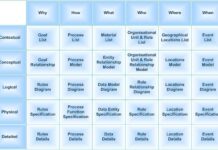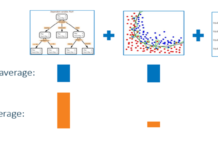Some modern architects are often more political than technical. They provide high-level sales support, defend managers’ budgets or schedules, and make framework procurement decisions. These are business necessary roles but not architectural.
The promotion of senior team lead to an architect is another popular route. These architects no longer write code but set the shape of interfaces and polymorphic dispatches. They will be there for high-level design and do some code review. You will not be a trusted architect if you are not coding and testing your prescribed strategies.
Good Architecture maximizes the number of decisions that are NOT made. Sometimes the decision is deferred to the point that you realize that some decision will never need to be made. (YAGNI – You Are Never Going To Need It)
Good Architecture defers implementation decisions as long as needed because good architecture focuses on use cases and business objects. The excellent design separates the values from the implementation without undue costs.
The more things are separated, the more each can be maintained, deployed, and managed independently. These are the principles of good architecture. Many make the delivery system the central organizing system, not the business use case. Good architecture should be able to re-platform to any delivery mechanism because it screams the intent of the business. Our design below will show how we scream reporting and never mention a technology.
Case Study In Reporting And Information Delivery Architecture
Level 1: GIVE ME THE DATA
Understanding is the foundation of performance across organizations and business processes.
The model requires a standard definition of the business and base metrics used to measure the business, including storage, management, and customization.
Level 2: DECLARATIVE REPORTS: OPTIMIZE THE REPORT SPRAWL
Access requires the use of information from inside and outside the enterprise, including information that resides in data warehouses, operational and legacy systems, and documents that contain any piece of relevant content.
Level 3: ADHOC REPORTS: ENGINEER SELF SERVICE THAT ALLOWS FILTERING, SORTING, AND DRILLING
Discover involves users performing queries through simple or more sophisticated user interfaces that align with their roles and responsibilities. Analytics can be applied at any stage to generate metrics to analyze the business.
Interact involves manipulating information through different visualization methods (tables, charts, and maps) or user interfaces to understand particular aspects of the business.
Level 4: DASHBOARDS: ESTABLISHED THRESH HOLDS, WHICH MAKE SEAMLESS WORKFLOWS AND ALLOW REAL-TIME MONITORING
ALIGN enables individuals to perform their job tasks in coordination with the defined business strategy, goals, and benchmarks.
Target is where the business strategy, goals, and objectives are defined and available to those with permission. It is a baseline for understanding how to score individuals and their performance.
A score is where an organization uses an application approach such as a dashboard, scorecard, or custom user interface to understand the relevant performance of an individual, department, organization, or business process.
Inform and information delivery are the most common ways of communicating information to individuals in the organization. This can be automated to push notifications routinely or use user-request methods. The information can be personalized based on a profile to the individual’s needs. The delivery method can be across Web, wireless, or voice systems, and devices supported could be email, fax, pagers, personal digital assistants, and telephones.
Automate features include alerts, agents, and notifications. Alerts rely on set thresholds based on information collected through monitors. If met, an alert will be delivered to defined individuals. Agents provide the ability to define an event based on information in a workflow with business logic that will drive some action.
Level 5: MACHINE LEARNING & ANALYTIC APPLICATIONS: PROGRAMMATIC PARAMETER DRIVEN STANDARDIZED ANALYTICS THAT DERIVE PRESCRIPTIVE ACTIONS
OPTIMIZE is the area that requires more sophisticated use of software to make the most of organizations and business processes.
Project is accomplished in three ways: forecast (project the business across future periods based on assumptions, facts, calculations, or business rules), planning (plan strategies ahead of time that will potentially change the business model and perform simulations or scenarios to understand the strategies’ effects), and mining (the use of data mining techniques and tools that leverage predictive models and mathematical algorithms to discover trends or patterns).
Collaboration is the ability to publish or share information with anyone inside and outside the organization. Individuals should be able to comment on the information collaboratively through different mechanisms (text, email, or newsgroups) and capture knowledge for future assessment.
Integrate involves taking metrics, reports, or any information and integrating this data within portals, operational applications, or the Internet. This process also includes the capability to customize the information interface through the user interface or a custom application. This step requires interfaces that enable tools to be integrated with other software systems.
Act is the ability to perform an update in the form of a transaction, message, and so forth based on information to support a process or function. This capability will enable individuals to assist in streamlining decision-making processes.
Notice that there is no focus on frameworks or technologies. These decisions can be deferred to build or buy and pushed later.












[…] Why Architecture and Design? – A Case Study In Reporting And Information Delivery Architecture SHARE Facebook Twitter […]
Comments are closed.